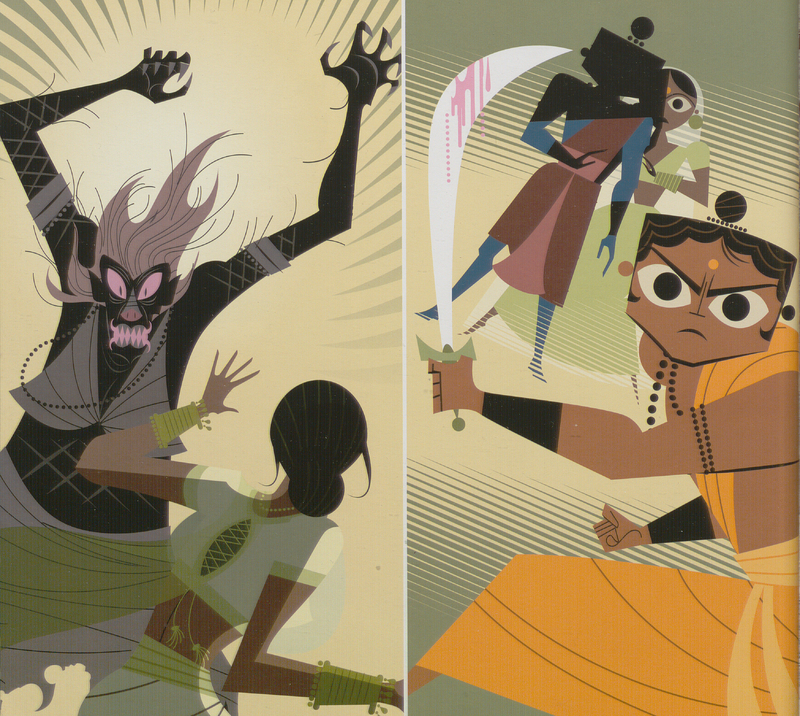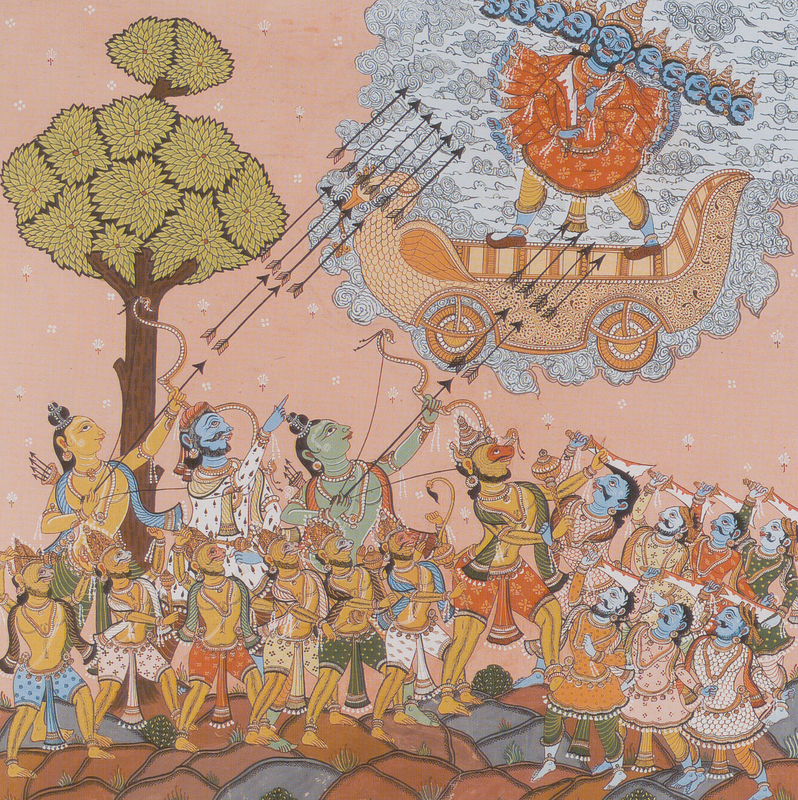Ravana
He would disrupt sacrifices at their climax, then murder the brahmans. He was savage and wicked, cruel and ruthless, delighting in the misfortune of others. He was Ravana, "he who makes all creatures wail," the terror of all the worlds.
— "The Forest" 30.20
The Ramayana enjoys great popularity not only because of its noble hero, but because of its cruel villain. The ten-headed rakshasa king Ravana engages in so many nefarious actions partly due to his belief that his is unstoppable. Due to Ravana's period of intense penance, the god Brahma once gave Ravana a boon. Ravana took advantage of the boon to be safe from any supernatural harm. However, he remains vulnerable to harm from mortals. This did not appear to be an issue until Rama, a god in mortal form, became his enemy.
Ravana's boon leads him to engage in reckless behavior, such as kidnapping Sita. Although this crime eventually leads to his destruction, at first, everything goes smoothly for the rakshasa king. He sends a rakshasa in the form of a beautiful golden deer to Sita, Rama, and Lakshmana's camp, knowing that Sita will want the lovely creature for herself. When Rama is away hunting, Ravana makes it seem as the hero screamed in agony, which causes Lakshmana to run and help his brother. This leaves innocent Sita alone. Ravana disguises himself as a beggar to gain her trust, then quickly kidnaps her before Rama returns.
Had Ravana not kidnapped Sita, Rama would have not found cause to attack him and his kingdom. Some of his advisors explicitly caution him against kidnapping Sita, such as Ravana's brother, Vibhishana. When Ravana foolishly ignores this advice, Vibhishana joins Rama's army instead, and he is crowned king of Lanka once Ravana is defeated.
Ravana's story serves as a powerful lesson in ego. If he had considered mortals to be worthy, dangerous opponents, he would have had protection against them; if he had listened to his family, he would have avoided a catastrophic war.

Shurpanakha

